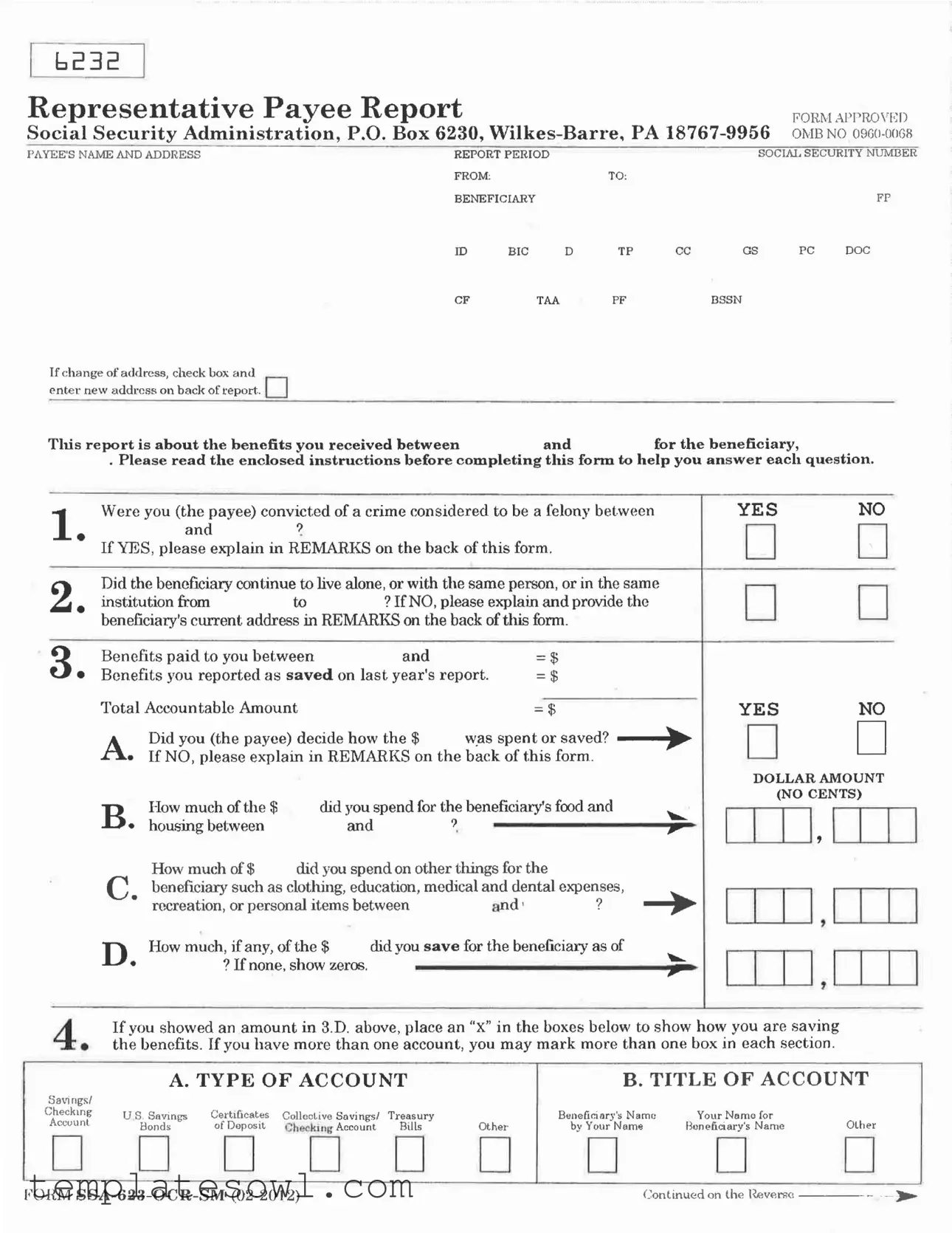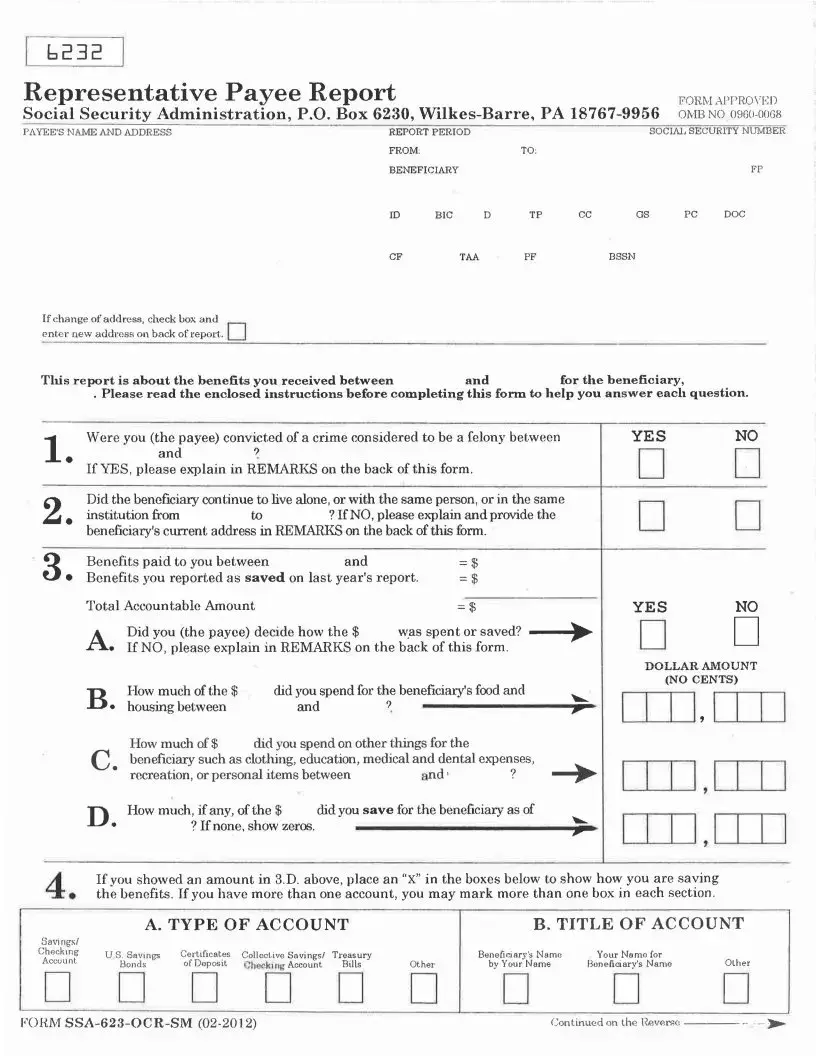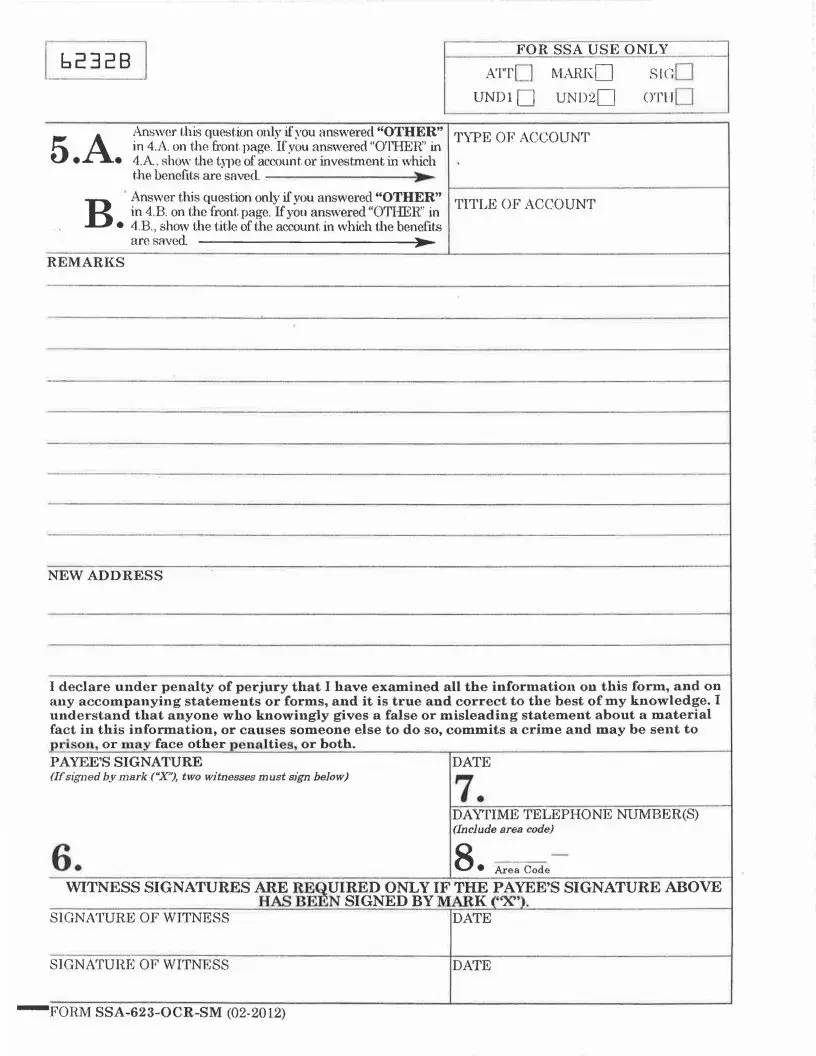What is the SSA-6232 form?
The SSA-6232 form, also known as the Representative Payee Report, is used by individuals who manage Social Security benefits on behalf of another person. It provides important information about how the benefits were used during a specific reporting period.
Who needs to fill out the SSA-6232 form?
This form must be completed by a payee—someone who receives and manages Social Security benefits for another individual, known as the beneficiary. If you are the designated payee, it is your responsibility to report how the funds were managed and spent.
When should the SSA-6232 form be submitted?
The SSA-6232 form is typically submitted annually. The specific time frame for submission can depend on the Social Security Administration's request or schedule. Be sure to comply with deadlines to ensure continued benefits.
What information is required on the SSA-6232 form?
You will need to provide details such as your name and address, the beneficiary's name and Social Security number, the reporting period for the benefits, and how the funds were spent. You may also need to provide information if there were any significant changes in the beneficiary's living situation or if any criminal convictions occurred.
What happens if the beneficiary's living situation changes?
If the beneficiary has changed their living situation, you must explain this on the form. Provide the new address and any relevant details to ensure the Social Security Administration has accurate information.
How do I report the amount spent for the beneficiary's needs?
The form requires you to break down expenditures. You will report how much was spent on food, housing, clothing, medical expenses, and other necessities. It's important that you keep records of these expenses for accuracy.
What if I didn’t use all the funds for the beneficiary?
If there were funds remaining, you must indicate how much was saved for the beneficiary. If none was saved, you should clearly show zeros in that section. Honesty is crucial as misleading information can lead to penalties.
What are the consequences of providing false information?
Providing false or misleading information can have serious consequences. It may result in criminal charges, including potential imprisonment. Integrity in reporting is essential to maintain trust with the Social Security Administration.
Who should I contact if I have questions while filling out the SSA-6232 form?
If you have questions, you should reach out directly to the Social Security Administration. You can contact them by phone or visit your local office for assistance. They can provide clarification on completing the form correctly.
Where do I send the completed SSA-6232 form?
You must send the completed SSA-6232 form to the address provided on the form itself: Social Security Administration, P.O. Box 6230, Wilkes-Barre, PA 18767-9956. Ensure it is mailed by the required deadline to avoid any issues with benefit management.


